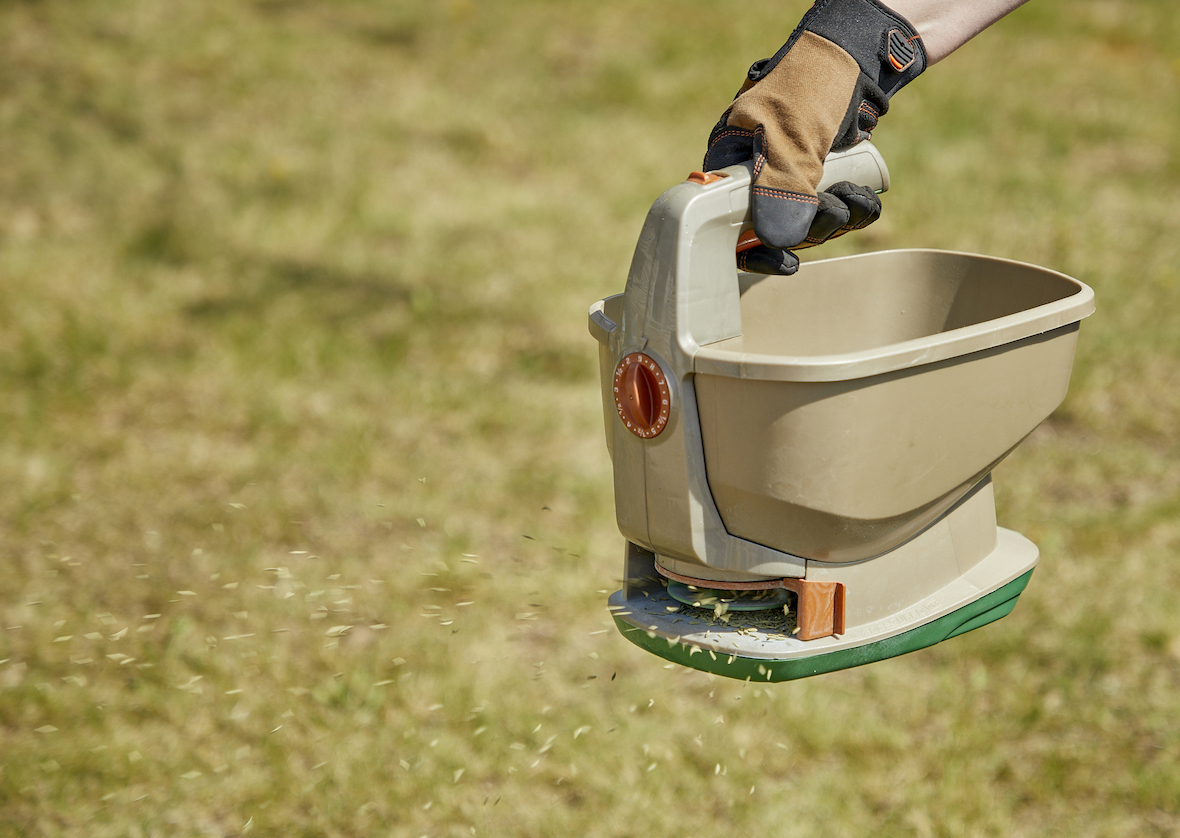

We may earn revenue from the products available on this page and participate in affiliate programs. Learn More ›
A full, green lawn creates curb appeal and makes you feel like sipping an iced tea on the back patio. But if bare spots peek through and weeds overpower the grass, the lawn might be more of an eyesore than a point of pride. Overseeding chokes weeds and fills out the grass until it’s thick and lush. If you’re not sure how to overseed a lawn, all it takes is the right tools, smart timing, and a little knowledge about your local climate.
What is “overseeding,” exactly? Why is this lawn task not just called “seeding”? “Overseeding” is the term for adding more grass seed to a lawn without turning the topsoil. For many homeowners, overseeding is central to general lawn maintenance. Some lawns might need it once a year if drought or disease threaten the grass, and other lawns might need it every few years only to brighten the grass and keep it full.
A few basic tools—like a lawn mower, seed and fertilizer spreader, and rake—are all that you need to achieve a less patchy, more verdant yard. With the right grass seed and timing, overseeding will restore the lawn and give it a lush, uniform appearance.
Tools & Materials
Bobvila.com may earn a commission from purchases made through these links.
Project Overview
Working time: 3 hours or more, depending on the size of the lawn
Total time: 3 hours or more, depending on the size of the lawn
Skill level: Beginner
Estimated cost: $100 to $200, depending on size of lawn and products used
Before You Begin
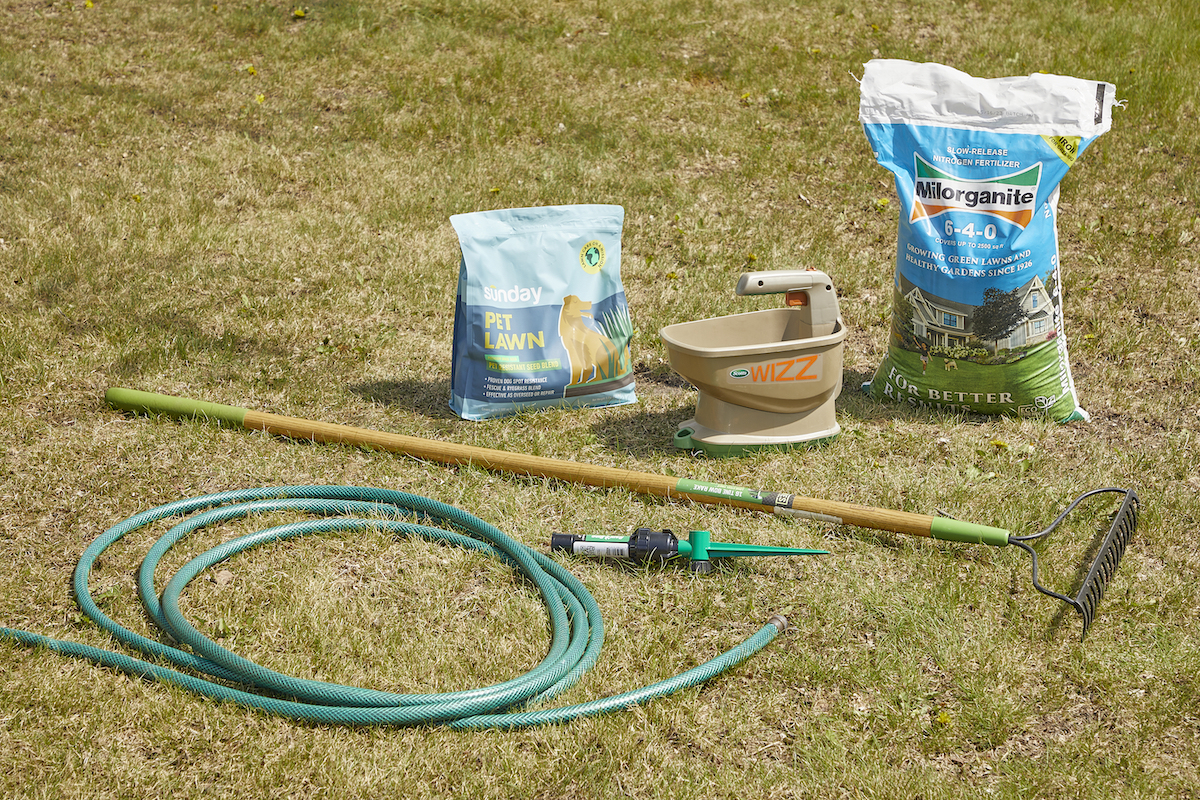
If your lawn has thatch (a compact layer of grass and soil), it might need dethatching or aerating before you spread seed. Otherwise, the grass seed used in overseeding won’t reach the soil to germinate and take root. Aerating creates holes in the grass and soil through which water, oxygen, and vital nutrients can reach the new grass seed and the roots of the existing grass.

Overseeding a Lawn in 5 Simple Steps
Step 1: Mow and rake the lawn.
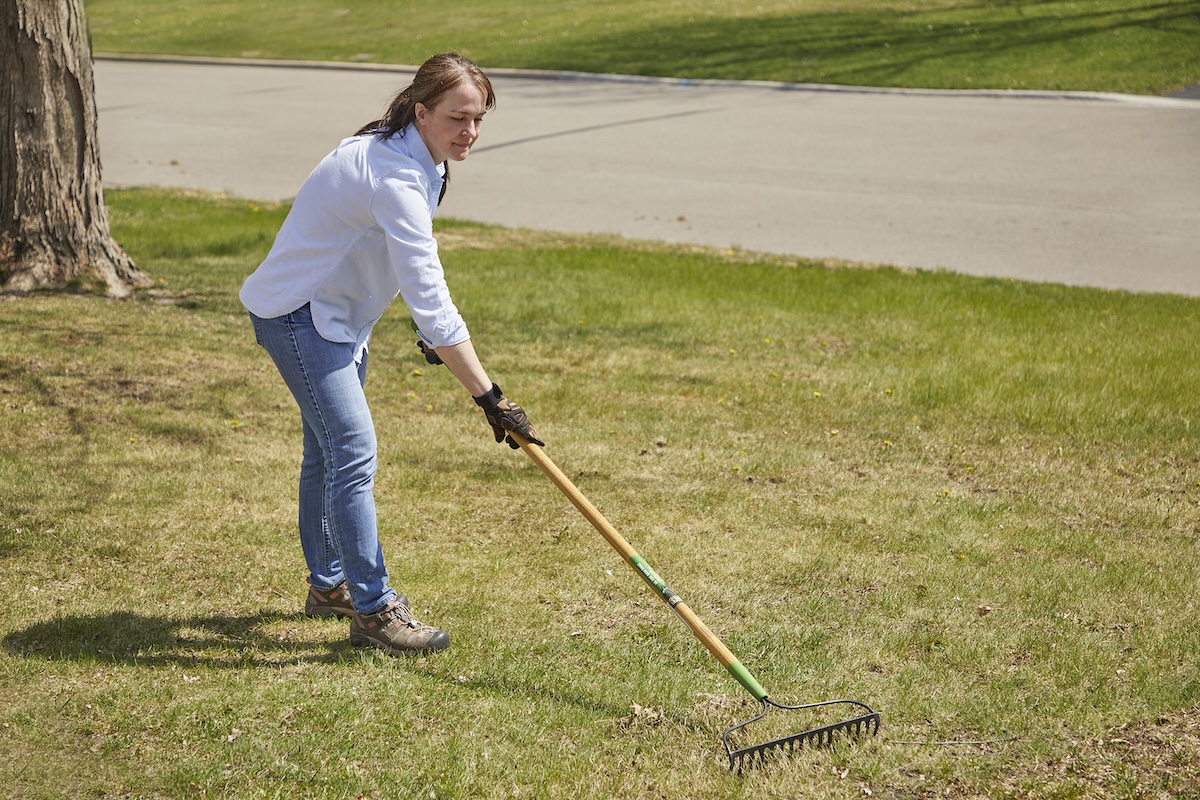
The goal of overseeding a lawn is to get the grass seed in contact with the soil. To do that, the first step is to mow the lawn. Mow it shorter than usual so the grass seed will have a better chance of reaching the soil. Make sure to bag the clippings so they don’t come between the seeds and soil.
After mowing, rake the entire lawn to remove dead grass, rocks, sticks, and any other debris. This process removes any final barriers between the grass seed and soil, and loosens the soil in preparation for seeding and germination.

Tried-and-True Advice
“One thing that really helped me was choosing a cloudy day to overseed. I noticed that the soil stayed cooler and more moisture was retained, especially if there was some light rain afterward. It can make the germination process smoother and reduces the need for heavy watering.”
—Paul Rankin, Contributing Writer
Step 2: Amend the soil, if necessary.
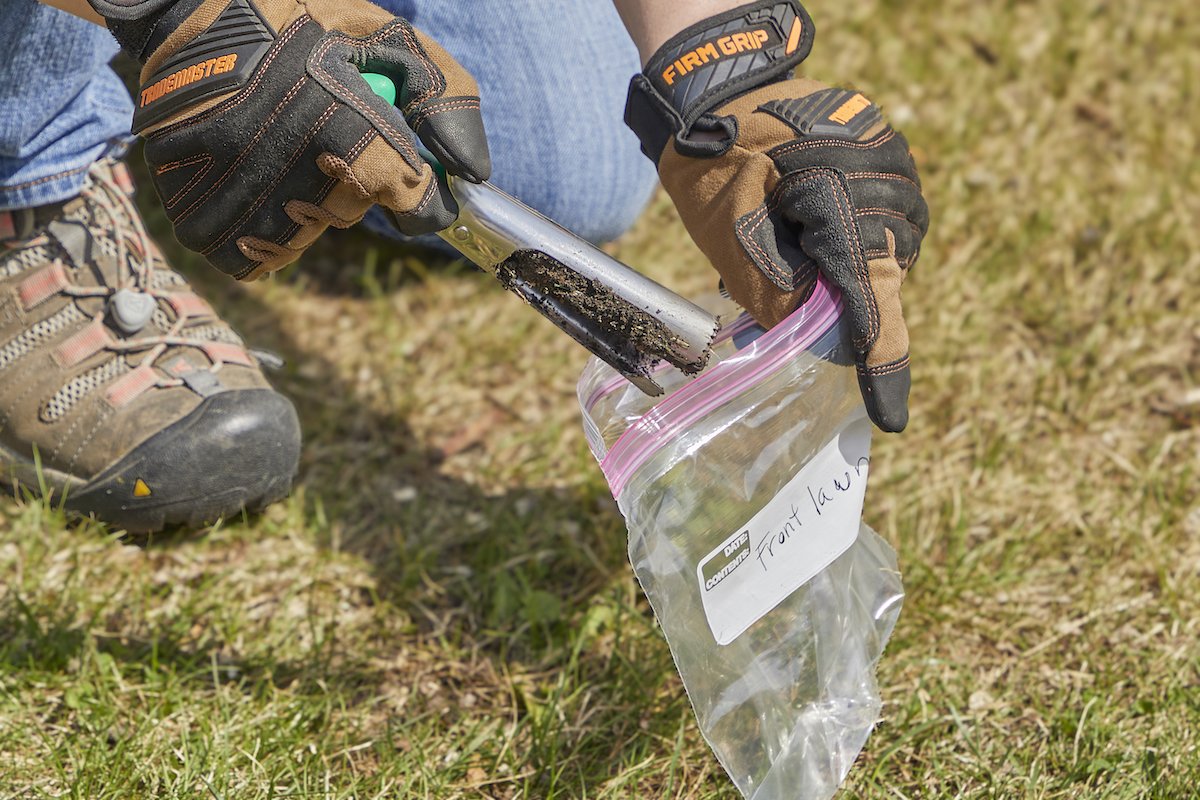
Soil amendments are different from fertilizers. Amendments have specific nutrients and chemical compositions for specific soil types. For example, lime, wood ash, and poultry manure raise the pH level of acidic soil to make it more suitable for certain plants and grasses. Sulfur amendments, on the other hand, add acidity to alkaline soil. Additions of peat moss for clay soil and compost for sandy soil also can improve the nutrients in the lawn and its condition.
If a lawn has not been growing and greening as it should, doing a soil test can determine the soil type and pH. The test results will identify what, if any, types of amendments the soil needs for grass to develop. Keep in mind that if the soil has a neutral pH and is fertile, it likely needs no amendments.
RELATED: Top-Dressing the Lawn: Why It’s Important and How to Do It
Step 3: Spread the grass seed.
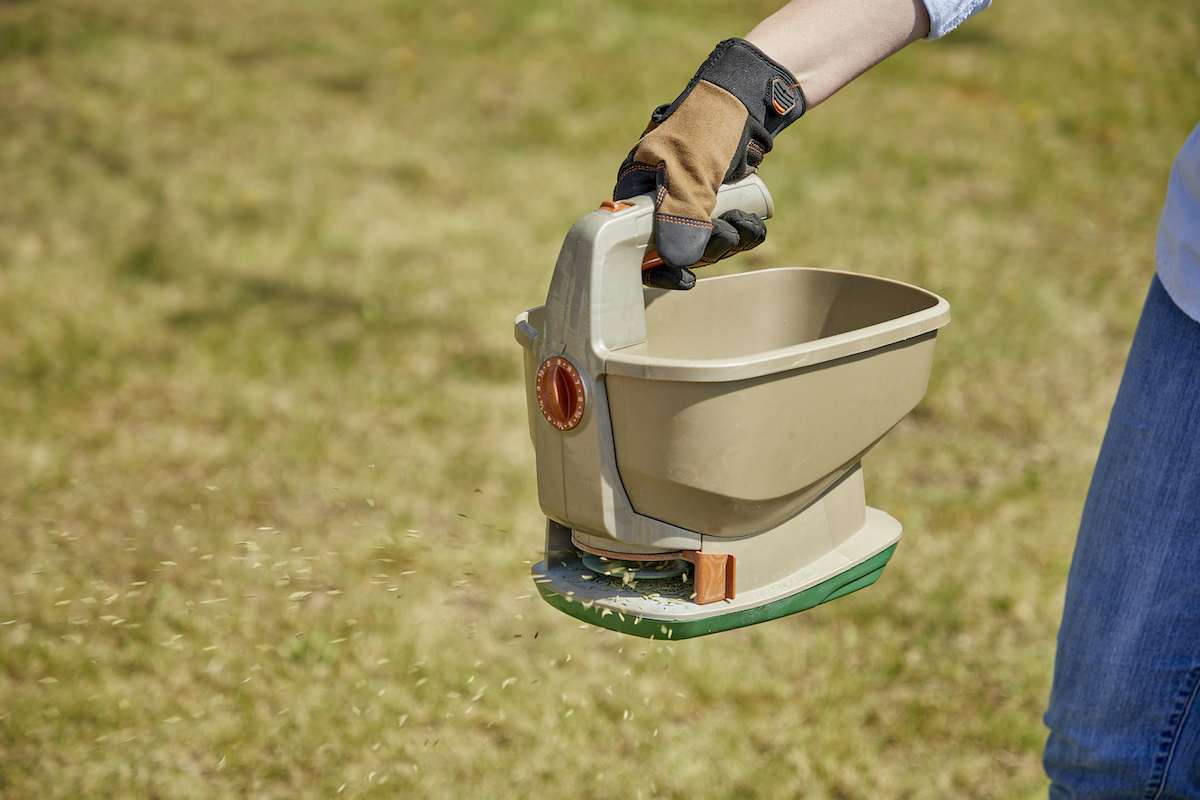
After determining the right time of year time to overseed (knowing when to reseed a lawn is based on your climate and grass type), load the grass seed into a seed spreader and set it to distribute about 16 seeds per square inch of soil. The right seed density will depend on the thickness of the existing lawn, so some lawns might need less. You can spread grass seed by hand if you don’t have a spreader.
Choose a grass seed designed for your climate or region that complements the existing grass. Cool-season grasses thrive in variable temperatures, like those found in the Northeast and Pacific Northwest. Warm-season grasses grow best in a climate like that of the southern United States. (For recommendations on quality seeds, see our researched guide to the best grass seed for overseeding.)
Consulting the USDA Plant Hardiness Zone Map can help determine the average local climate to best choose the appropriate grass type. Look for grass seed that’s rated by the National Turfgrass Evaluation Program because these varieties have been tested and found resistant to disease, drought, and common pests.
Step 4: Add grass seed fertilizer.
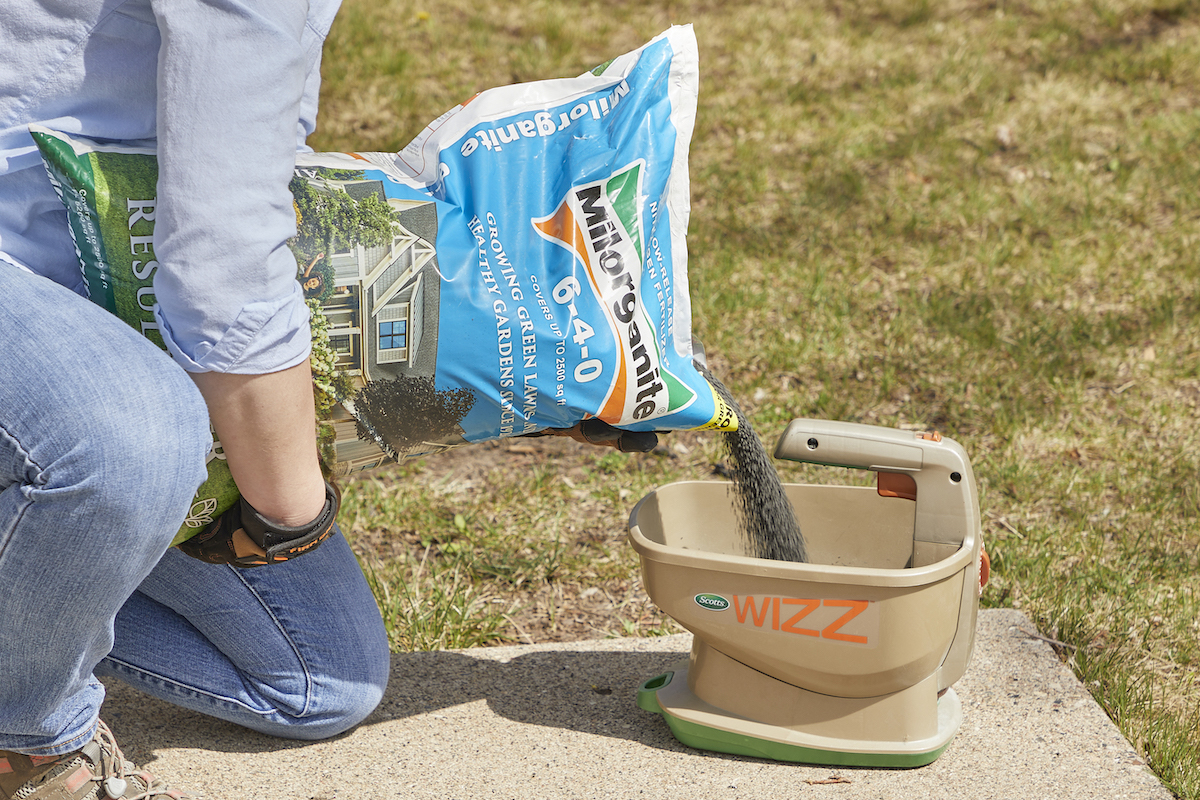
Select the best fertilizer for your region and property, and load it into a fertilizer spreader. Start by scattering around the perimeter of the lawn to make sure fertilizer reaches the edges of your property. Next, follow a pattern similar to a mowing pattern by moving in straight rows until the entire lawn is fertilized.
There are different types of fertilizer spreaders, including a broadcast spreader, handheld spreader, snap spreader, drop spreader, and liquid sprayer. Fertilizing small yards often requires just a small handheld spreader. Those with larger yards will save a lot of time and effort by using a broadcast spreader.
Both yard size and fertilizer type will determine which type of spreader is best for your property. For example, liquid fertilizer is applied via sprayer, like a quality backpack sprayer, and midsize yards are more easily fertilized with a snap or drop spreader. Keep in mind that some spreaders can handle both grass seed and fertilizer broadcasting, so depending on the fertilizer type and spreader, you might only need one tool for both steps.
Step 5: Water the seeded lawn.
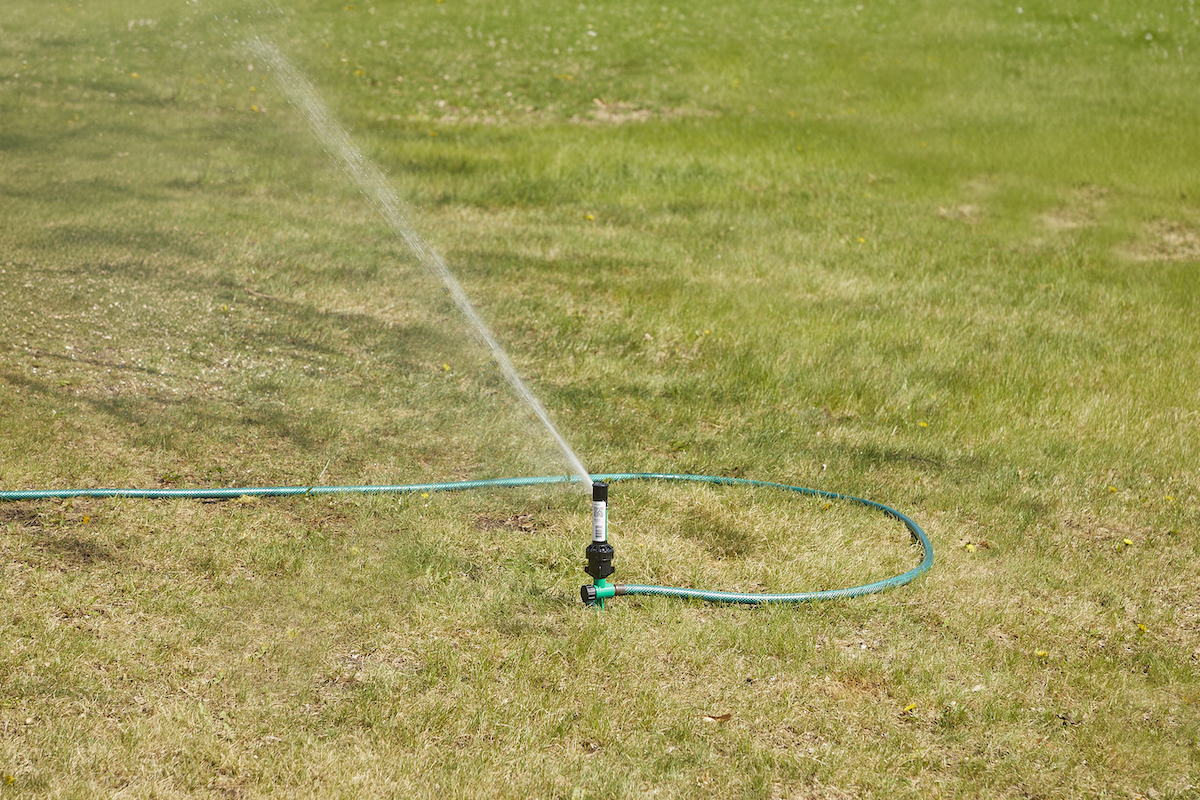
After fertilizing, water the lawn for a short time each day. It’s best to water in the morning to maximize the water intake. More evaporation occurs during the afternoon and evening, which means it will take more water to get the same benefits. You don’t want to overwater the lawn because doing so can wash away the seed, prevent germination, or encourage thatch development and the growth of fungus and weeds. If there are puddles or the ground feels spongy, cut back on the watering time.
RELATED: Solved! How Long Does It Take for Grass to Grow?

Final Thoughts
Part of learning how to overseed a lawn requires knowing when to do it, and this has everything to do with climate and grass type. Cool-season grasses seed best in the late summer and early fall. The cooler temperatures slow the growth of the existing grass but give the seeds time to germinate and grow before the grass goes dormant. Warm-season grass does best when seeded between early spring and early summer. In this case, the seed has time to germinate and grow before the warmest summer temperatures hit. Keep the new seed well watered to give it a good start on growth.
Once your lawn grass is shipshape, consider browsing low-maintenance plants for your landscape.
FAQs
You will have very little success overseeding a lawn if you just head out and sprinkle grass seed and then cross your fingers. For grass seed to take, the soil must be ready and free of barriers like grass clippings. If the lawn has lots of weeds that compete with grass, for example, sprinkling seed is a waste of time.
Knowing when to overseed a lawn depends largely on grass type. Sow cool-season grass seed in late summer and early fall, giving the seedlings a little time to develop before winter. Overseed a warm-season lawn in spring for best success. Also, try not to overseed on especially windy days or after a heavy rain.
First, spread your seed on prepared soil, then add grass seed fertilizer. Since you typically are overseeding in fall or late summer for cool-season grasses, and in spring for warm-season ones, you might as well apply your fertilizer to the entire lawn anyway, not just the overseeded portions. It’s typical to seed and fertilize a lawn at the beginning of the turf’s growing season.
Mowing after overseeding a lawn requires a little patience. You might be itching to make your lusher lawn a nice, even carpet of turf now that it has filled in. But you should wait until the new grass blades are about 2 inches tall. Since you mowed as part of preparing the soil for lawn seeding, the established grass shouldn’t be wildly overgrown.
